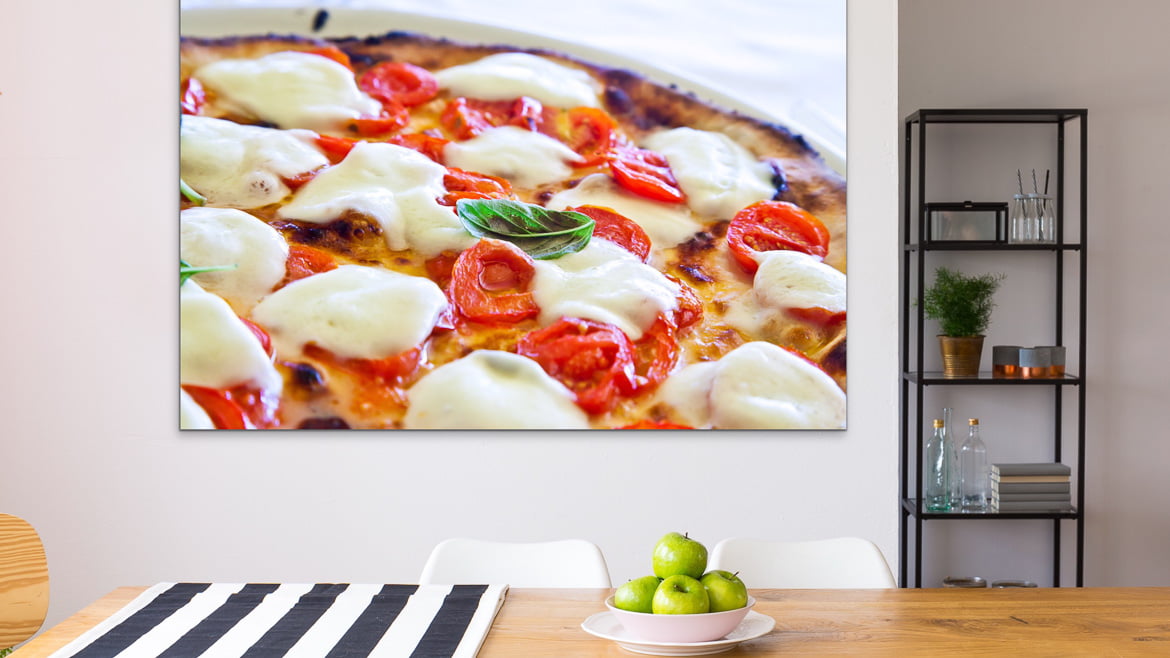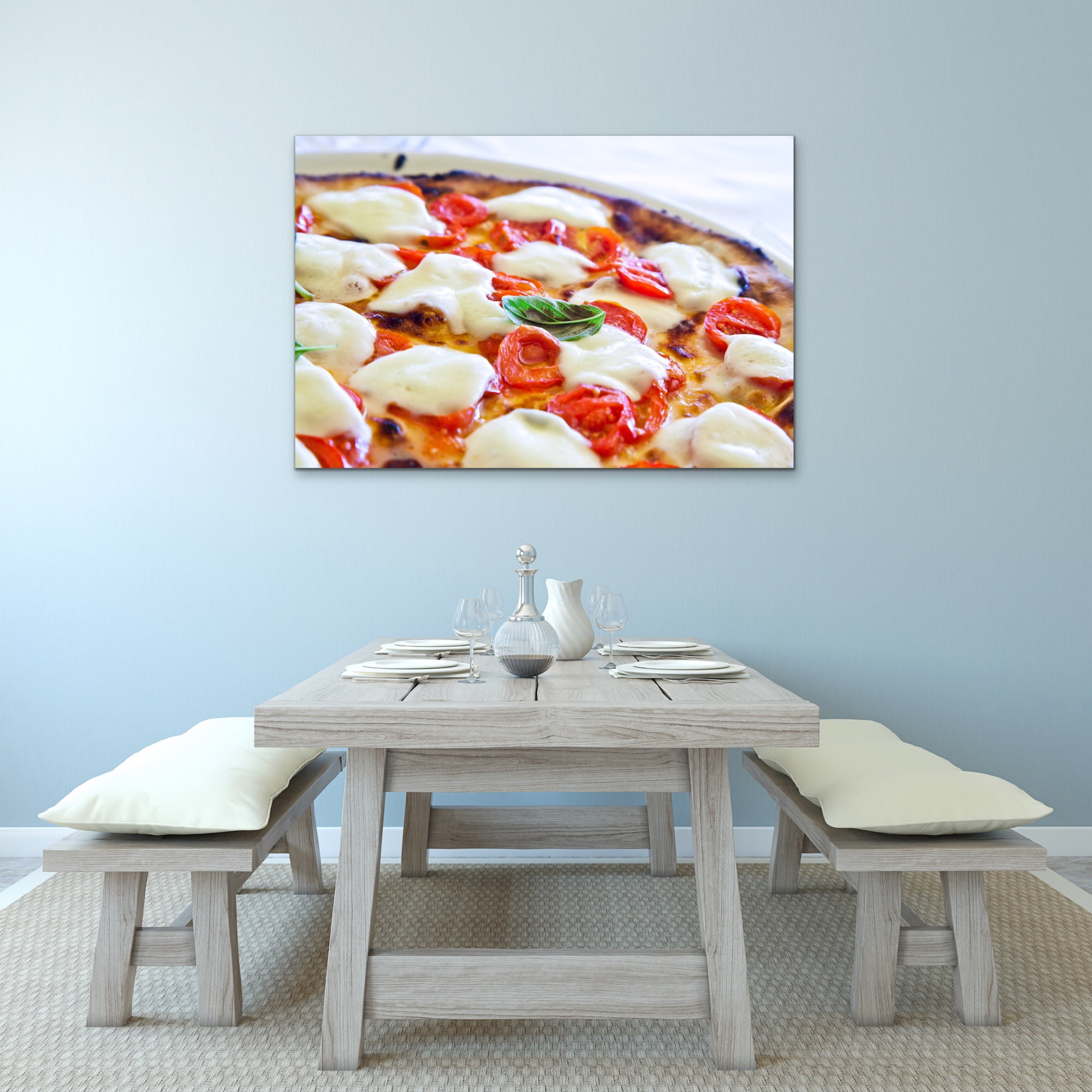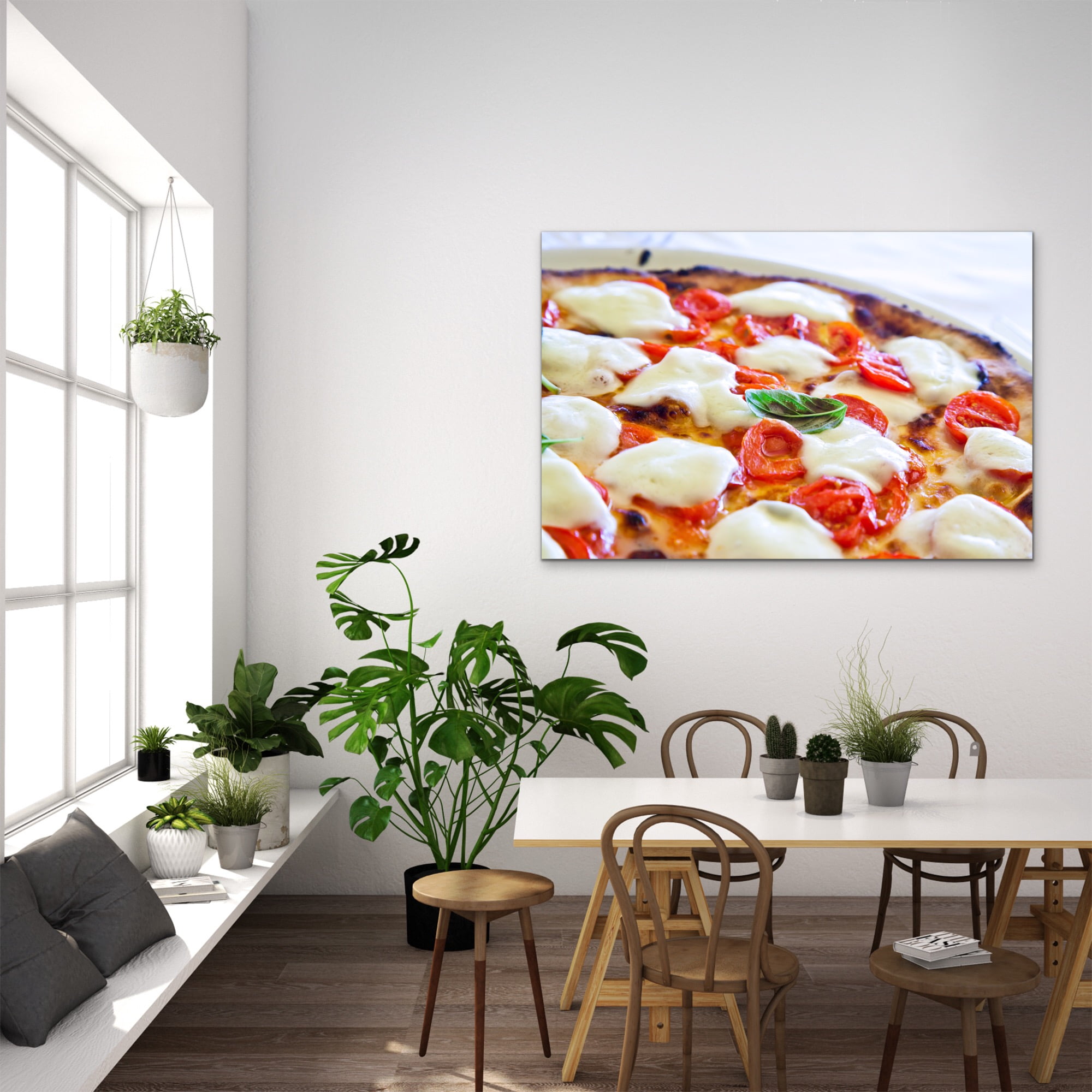Your kitchen can transform from a purely functional space into a vibrant hub of creativity through Kitchen Art. This guide will explore innovative ideas that allow you to express your personal style and bring a unique flair to your culinary oasis.
By using unexpected materials and techniques, you can create art that complements your cooking environment while enhancing its overall aesthetic. Get ready to unleash your imagination and turn your kitchen into a stunning canvas that reflects your personality and passion for food.
Key Takeaways:
- Transformative Power of Kitchen Art: The right pieces can elevate your kitchen from a functional space to a stunning visual experience, making kitchen art a vital element of interior design.
- Personalization through Creativity: Incorporating tailored kitchen art, such as DIY projects or artwork that reflects personal style, can transform bland walls into storytelling canvases.
- Mix and Match Elements: Combining different artistic styles and mediums, like paintings, prints, or wall sculptures, can create a unique ambiance while maintaining a cohesive kitchen aesthetic.
Understanding the Concept of Kitchen Art
While many may envision traditional art as paintings hanging in a gallery, kitchen art expands this idea to encompass a variety of creative expressions that can transform your cooking space into a unique visual experience. This concept invites you to explore everything from decorative utensils to vibrant wall murals, making your kitchen not just a functional area, but a true reflection of your personal style.
Defining Kitchen Art
Kitchen art involves the integration of aesthetic elements within your cooking area, blending functionality with design to create a space that inspires culinary creativity. It represents a diverse range of styles, materials, and artistic expressions that resonate with your taste and enhance the kitchen’s atmosphere.
The Importance of Personalization
One significant aspect of kitchen art is its ability to reflect your individuality and taste, turning an everyday space into something genuinely yours.
Conceptually, personalization plays a vital role in the effectiveness of kitchen art. By incorporating elements that resonate with you—whether it’s a collection of vintage spice jars, handmade pottery, or a custom-painted backsplash—you create an emotional connection to the space. This can enhance your cooking experience, making it not just about preparing meals but also about enjoying the journey. Personal touches in your kitchen art can turn it into a safe haven where you feel inspired, relaxed, and energized to whip up your next culinary masterpiece.
Factors to Consider Before Starting Your Kitchen Art Project
One of the most exciting aspects of transforming your kitchen is venturing into the world of kitchen art. However, before you initiate this creative journey, there are several factors to consider:
- Assessing your kitchen space
- Choosing the right color palette
- Functional vs. aesthetic choices
- Budget considerations
- Durability and maintenance of art pieces
After weighing these factors, you’ll be better equipped to create a stunning kitchen that reflects your personality and functionality needs.
Assessing Your Kitchen Space
Consider the layout and size of your kitchen. The available wall space, natural light, and overall design of your kitchen will dictate the kind of kitchen art you can successfully integrate. Take measurements and note the specific areas where art can be displayed without cluttering the space.
Choosing the Right Color Palette
Kitchen art can elevate your space, but it should harmonize with your existing palette. Choose a color palette that complements your cabinets, countertops, and flooring to ensure a cohesive look.
Your choice of colors can dramatically impact the mood of your kitchen. Opt for a palette that enhances the atmosphere you want to create—warm colors for a cozy feel or cooler hues for a refreshing ambiance. Consider incorporating accent colors that can pop against neutrals, making your kitchen art the focal point.
Functional vs. Aesthetic Choices
Even though aesthetics play a crucial role in your art selection, functionality is just as important. Think about how the art you choose will fit into your daily kitchen activities.
Project a balance between the visual appeal and practical use of your kitchen art pieces. For example, functional art like decorative shelving not only enhances your décor but also provides storage solutions. Be mindful of how your choices can either elevate your kitchen’s design or cause unnecessary clutter, ensuring that your selected pieces offer both beauty and utility.
How-To: Create Stunning Wall Art for Your Kitchen
Keep your kitchen fresh and inviting by embracing it as a canvas for your creativity. Transforming your walls into a work of art not only expresses your personality but also enhances the overall ambiance of your space. By choosing the right techniques, materials, and styles, you can inject life into your kitchen through innovative wall art. Let’s explore the steps to create captivating kitchen art that reflects your unique taste.
Selecting the Best Medium
To begin your journey in Kitchen Art, consider the medium that aligns with your kitchen’s aesthetic and artistic abilities. Options include acrylic paints, canvas prints, wood, or even textiles. Each medium offers a unique texture and vibe, so think about whether you want something bold or subtle. Your choice should complement your kitchen’s design while allowing your creativity to shine.
DIY Wall Art Ideas
The possibilities for DIY wall art in your kitchen are endless! You could create oversized fruit canvas prints, witty culinary quotes on reclaimed wood, or even a vibrant herb garden display. These projects invite a personal touch, making your kitchen feel more like home. Let your imagination guide you, and don’t be afraid to experiment with different styles and materials.
Another fantastic idea for DIY wall art is to upcycle household items. For example, you could use old cutting boards, spoon arrangements, or even wine corks to create unique wall decor. These art pieces serve as conversation starters while showcasing your love for cooking and entertaining. Just ensure that your creation is also durable and safe to hang in a kitchen environment.
Utilizing Photographs and Prints
While personal artwork is captivating, integrating photographs and prints can also elevate your kitchen decor. Think about framing family recipes, travel photos from food adventures, or vibrant prints of your favorite dishes. This not only adds character but tells a story that resonates with your culinary journey.
To make the most of photographs and prints in your kitchen art, select frames that suit your kitchen’s style. Consider using a cohesive color palette or a uniform style for your frames to create visual harmony. You can even mix and match various sizes to add depth to your display. Remember to choose high-quality prints that can withstand potential kitchen splashes, ensuring your artwork remains vibrant and engaging.
Tips for Incorporating Culinary-Themed Art
Not only does kitchen art enhance the aesthetic appeal of your cooking space, but it can also inspire your culinary creativity. Here are some tips for effectively incorporating culinary-themed art into your kitchen decor:
- Choose pieces that resonate with your personal cooking style.
- Experiment with different textures and materials to create visual interest.
- Incorporate functional art, like decorative cutting boards or utensil holders.
- Curate a mix of modern and classic art styles.
- Rotate your artwork seasonally for a fresh look throughout the year.
Recognizing the power of art in your kitchen can elevate your cooking experience and enhance the overall atmosphere in your home.
Choosing Kitchen-Centric Imagery
With so many options available, selecting the right kitchen-centric imagery is crucial. Focus on pieces that reflect your culinary preferences, whether it’s rustic food photography, vibrant fruit illustrations, or abstract representations of kitchen tools. Artistic representations of herbs and spices can also breathe life into your space, offering both beauty and a reminder of the flavors you love.
Utilizing Cookbooks as Art
KitchenCentric art can also be found in the pages of your favorite cookbooks. Displaying these books as decorative elements can turn functional items into artful statements. Stack them on countertops or open them to showcase stunning food photography.
Understanding how to use cookbooks as art allows you to blend functionality with style. Consider using cookbook stands to showcase your most treasured recipes while adding personality to your kitchen. Choose cookbooks with stunning covers or vibrant photography, and don’t hesitate to mix in a few vintage cookbooks for eclectic charm.
Creating a Gallery Wall with Recipes
CulinaryThemed artwork can also elevate your kitchen through curated gallery walls. Combine framed recipes, food-themed prints, and personal snapshots of your culinary masterpieces for a unique display.
Recipes can form a beautiful tapestry on your wall, inviting family and guests to explore your favorite dishes. Consider framing handwritten recipes to add a personal touch, or intermix art printable designs featuring ingredient lists and whimsical food art. This not only decorates your walls but also encourages a sense of community and sharing around food.
How-To: Transforming Everyday Kitchen Items into Art
Once again, it’s time to unleash your creativity in the heart of your home—the kitchen! By transforming everyday kitchen items into stunning pieces of kitchen art, you can create a unique and personalized atmosphere. Here are some innovative ideas to get you started.
Repurposing Utensils
Transforming ordinary utensils into art can be as simple as rearranging them creatively on your walls. Old forks, spoons, and knives can double as wall decor when mounted in interesting patterns. You can also paint them in vibrant colors to breathe new life into your kitchen walls.
Decorating Storage Solutions
Some kitchen storage items are just begging to be used as decorative elements. Old glass jars, for example, can be painted or adorned with twine and labels, transforming them from mere containers into eye-catching fixtures. Adding some decorative touches also helps to maintain organization while showcasing your personal flair.
Into the world of kitchen art, you can consider using chalkboard paint on jars for a fun, interactive twist. This allows you to label your items creatively and change them whenever necessary. Additionally, baskets can be painted or stenciled to add a pop of color and design, further elevating your kitchen’s aesthetic.
Crafting Art from Food Packaging
An innovative way to incorporate kitchen art into your space is by upcycling food packaging. You can create a collage with cereal boxes or turn coffee bags into wall hangings. The beauty lies in the various textures and colors that used packaging can offer.
Understanding the design potential of food packaging can truly elevate your kitchen atmosphere. You can cut and shape these items into beautiful pieces, using them to create stunning mosaics or even 3D creations. Not only does this method promote sustainability, but it also adds a personal touch to your kitchen art by telling a story behind each piece.
Tips for Adding Greenery and Nature to Your Kitchen Art
After you embrace the concept of Kitchen Art, think about how you can incorporate greenery and nature into your design. Adding plants not only enhances the aesthetic appeal of your kitchen but also promotes a sense of well-being. Here are some tips to get you started:
- Choose low-maintenance plants.
- Utilize vertical space for hanging plants.
- Incorporate colorful pots to add personality.
- Mix and match the sizes and shapes of plants.
- Consider using your kitchen windowsills for natural light.
Choosing the Right Plants
Some of the best choices for Kitchen Art are low-maintenance plants like succulents, pothos, or herbs. They not only add visual interest but also thrive in a kitchen environment. Be sure to consider the amount of natural light your kitchen receives, as this will greatly influence your plant selection.
Incorporating Herb Gardens as Decor
Choosing to incorporate herb gardens into your kitchen décor is a delightful way to combine Kitchen Art and functionality. Herbs like basil, rosemary, and thyme are easy to grow and offer fresh flavors for your cooking. By using decorative pots or hanging planters, you can create an attractive centerpiece that also serves a practical purpose.
Kitchen herb gardens can be designed in a variety of ways, from wall-mounted planters to small pots on your countertop. They not only provide fresh ingredients for your meals but also infuse your space with vibrant greenery. Herb gardens are an exceptional conversation starter and can elevate the overall ambiance of your kitchen, seamlessly blending artistry with utility.
Using Natural Materials Creatively
Gardens are not the only way to bring nature into your kitchen. Using natural materials creatively can significantly enhance your kitchen’s aesthetics. Think about incorporating wooden cutting boards, bamboo kitchenware, or a reclaimed wood shelf for your plants.
Materials like stone, clay, and wood can add texture and warmth to your kitchen design. For example, consider using natural stone as a countertop or handmade clay pots for your plants. Not only do these elements celebrate the beauty of nature, but they also bring a sense of authenticity to your kitchen space. By combining these materials with your plant elements, the overall decor can be both rustic and stylish, transforming your kitchen into a true masterpiece. Thou, your kitchen can become a captivating creative haven with the right touches of nature.
How-To: Curate a Cohesive Kitchen Themed Kitchen Art Collection
Your kitchen is more than just a place to prepare meals; it can be an inspiring space that reflects your style through innovative Kitchen Art. To begin, you’ll want to establish a theme that resonates with your culinary environment and personal taste.
Establishing a Theme
You should start by identifying the mood or vibe you want to create. Are you drawn to rustic farmhouse charm, sleek modernity, or vibrant culinary-themed art? By defining a clear theme, you will create a focused collection that enhances your kitchen’s atmosphere.
Mixing Different Styles Seamlessly
Even if you have diverse tastes, you can achieve harmony by thoughtfully mixing styles. Aim to select a few unifying elements, such as color palettes or specific materials, to bind the collection together while still showcasing various influences.
Curate your collection by incorporating artwork that reflects your eclectic style, but make sure there are consistent themes throughout, like similar *textures* or a cohesive *color scheme*. This balance lets you express your personality while maintaining a visually appealing design. Consider using a neutral base to allow your eclectic pieces to shine without clashing.
Rotating Artwork Seasonally
Artwork in your kitchen can feel stale if it never changes. Therefore, rotating your Kitchen Art seasonally keeps the space fresh and engaging. You can swap pieces based on the changing seasons or your culinary adventures.
Seamlessly integrating seasonal updates invites a dynamic element into your kitchen. This can involve changing out artwork that reflects seasonal produce or using festive themes during holidays. Not only does this keep your kitchen space lively, but it also allows you to showcase a variety of Kitchen Art, ensuring that your culinary sanctuary stays as inspiring as the meals you create within it.
Final Words on Kitchen Art
To wrap up, embracing the concept of your kitchen as a canvas allows you to infuse your personal style and creativity through innovative kitchen art ideas.
By incorporating unique designs, functional pieces, and vibrant colors, you can transform your kitchen into an inspiring space that reflects your taste. Bear in mind, that kitchen art isn’t just about aesthetics; it enhances your cooking experience and creates a warm atmosphere. So, don’t hesitate to experiment with different materials and themes to elevate your culinary haven into a true masterpiece.
FAQ about ‘The Kitchen as a Canvas: Exploring Innovative Kitchen Art Ideas’
Q: What is Kitchen Art and how can it transform my space?
A: Kitchen Art refers to creative expressions that enhance the aesthetic appeal of your kitchen, making it not only a functional area but also a visual delight. By incorporating unique artwork, vibrant colors, and innovative designs, you can transform your space into a culinary haven. Artistic elements like wall murals, decorative dishware, and custom backsplash designs can define your kitchen’s style and elevate the atmosphere into an inviting space for both cooking and gathering.
Q: What types of art can I incorporate into my kitchen?
A: There are numerous types of Kitchen Art to consider, including but not limited to framed prints, handmade ceramics, painted utensils, wall decals, and unique shelving designs. You can also use magnets, artwork on the refrigerator, art-inspired dish towels, or even wall-mounted plants for a fresh touch. The key is to choose pieces that resonate with your personal style and complement the overall theme of your kitchen.
Q: How can I create a cohesive look with my Kitchen Art?
A: To achieve a cohesive look, start by selecting a color palette or theme that aligns with the existing decor of your kitchen. This could involve coordinating your wall art, utensils, and textile patterns in similar colors or styles. Additionally, consider the scale of the artwork—choose large pieces for open spaces and smaller items for tighter areas. Grouping smaller art pieces together can also create an impactful visual statement while maintaining harmony.
Q: Are there budget-friendly options for adding Kitchen Art?
A: Absolutely! You don’t need to break the bank to enhance your kitchen with art. DIY projects, such as painting your own wall art or repurposing vintage kitchen items, can add a personal touch at a minimal cost. Thrift stores or flea markets often have unique finds at lower prices, and you can frame prints or create a gallery wall using inexpensive frames from discount shops. Bear in mind, that creativity is key when it comes to Kitchen Art on a budget!
Q: How can I maintain and care for my Kitchen Art?
A: Proper maintenance of Kitchen Art ensures its longevity and continued aesthetic appeal. For wall art, use a soft cloth to dust and avoid placing it near heat sources or areas prone to moisture. For textiles, follow the care labels carefully, and for ceramics, use gentle cleaning methods to preserve intricate designs. Regularly check on plants or greenery incorporated into your decor to keep them healthy and vibrant. By taking these steps, you can enjoy your Kitchen Art for many years to come.



